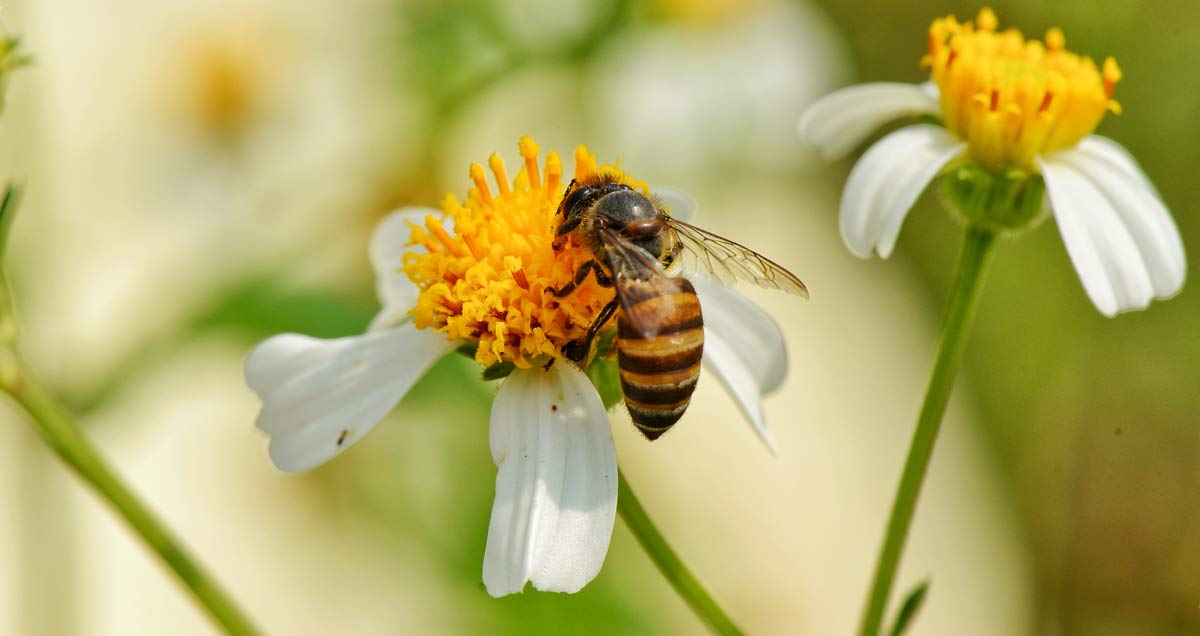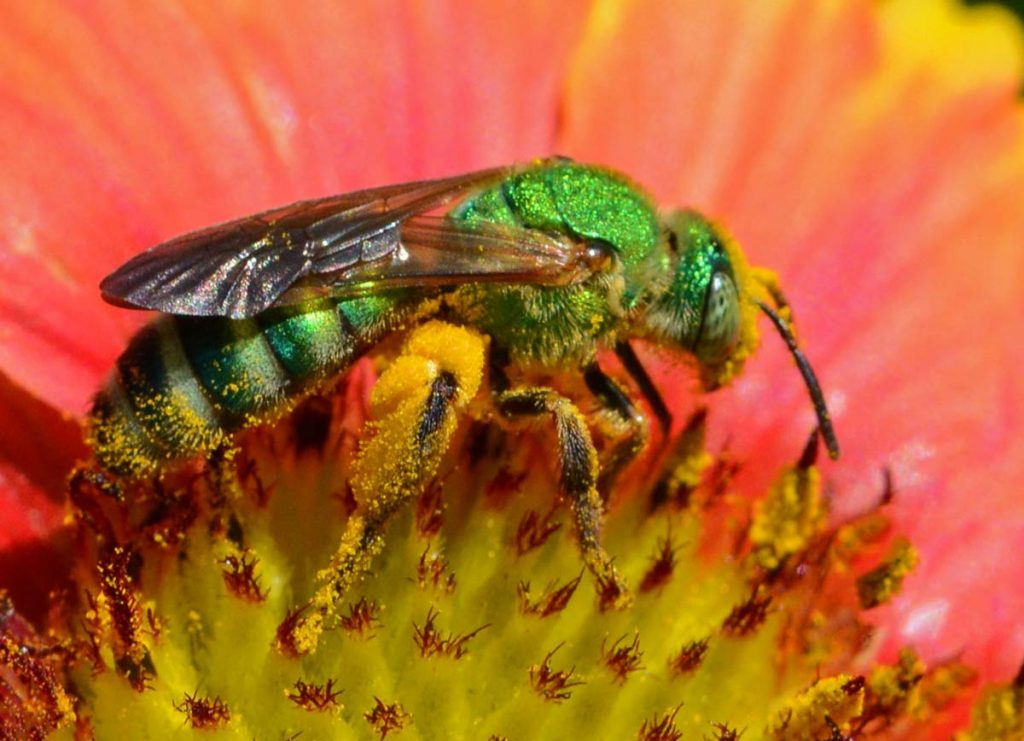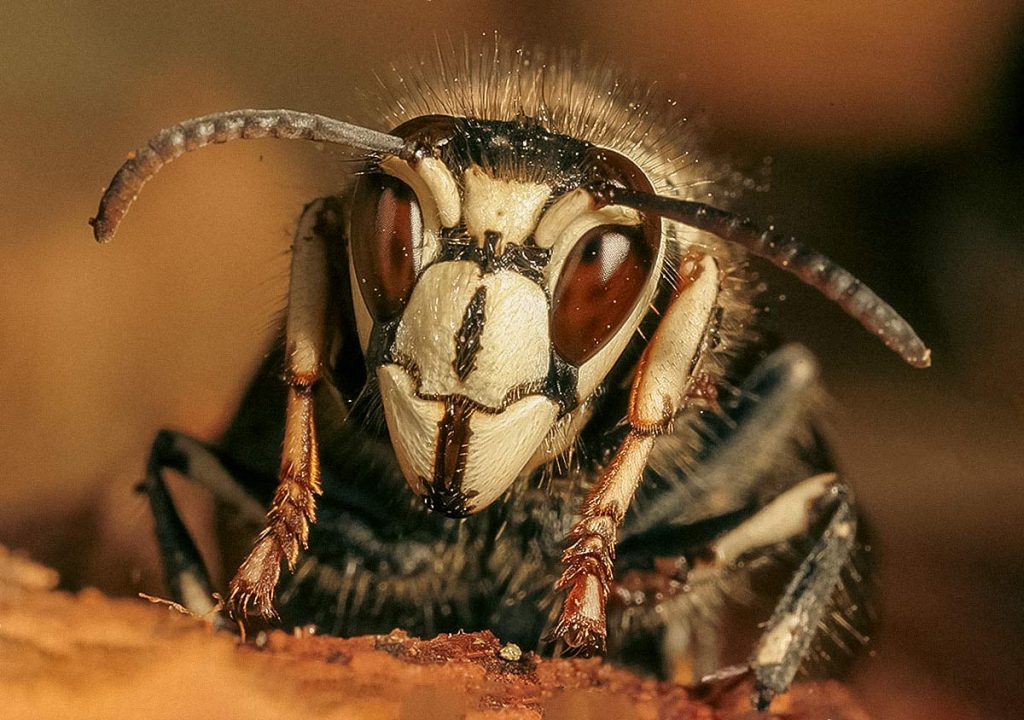Sweat Bees, Bumble Bees & More: Key Pollinators of the North Shore
Bees, the tireless workers of our ecosystems, are indispensable as pollinators. Their intricate relationships with flowering plants are fundamental to the sustenance of habitats and food chains worldwide. In Vancouver’s North Shore, a mosaic of bee species, from the vibrant orange and yellow bees to the more subdued yet essential sweat bees, thrive in the lush landscape. Recognizing and understanding these pollinators is a step toward safeguarding their future.

Understanding Different Bee Species
The bee population in British Columbia is as varied as it is vast, with over 3,500 native species. From the large, fluffy bumble bees to the diminutive, sleek sweat bees, the spectrum is remarkable. Some, like the bumble bee with its orange bottom, excavate underground burrows, while others, such as the bee with the green head, occupy hollow stems. The North Shore serves as a haven for these species, each playing a role in the tapestry of biodiversity.
Bumble Bees: The Bombus Species
Among them, the bumble bee genus Bombus stands out with its distinctive black and yellow banding. The familiar buzz of these fuzzy insects is a summer staple in gardens as they move from flower to flower. They are not only native pollinators but also key players in the evolution of the local flora.

Species Specific Information
The North Shore is a haven for several Bombus species:
- Orange Rumped Bumble Bee (Bombus melanopygus): This bee with an orange bottom is a common sight, nesting in cozy cavities, easily identified by its bright tail.
- Yellow Faced Bumble Bee (Bombus vosnesenski): With a striking bee with an orange head, this species prefers the earthy comfort of ground nests.
- Bright Yellow Bumble Bee (Bombus flavifrons): As a yellow fuzzy bumble bee, it’s a summer staple in blackberry and clover patches.
- Red Belted Bumble Bee (Bombus rufocinctus): A red and black bumble bee that dons a reddish belt and a black face, as variable in color as it is in habitat preference.
- Sitka Bumble Bee (Bombus sitkensis): Often confused with other species due to its yellow and black bumblebee appearance.
- Western Bumble Bee (Bombus occidentalis): This once-abundant bee, with a white-tailed hornet’s coloring, is now sadly facing decline.
Sweat Bees: The Tiny Pollinators
Tiny but mighty, sweat bees like the bicolored Agapostemon sweat bee play their part in the pollination process. These bees, some with green heads and others with blue-green hues, are as much a part of the North Shore’s biodiversity tapestry as their larger counterparts.

Subgroups of Sweat Bees
- Sweat Bees (Halictus): These ground nesters carve out tunnels, creating underground cities for their young.
- Metallic Green Bees (Agapostemon): The females of this group stand out with their bright, metallic sheen, solitary in their nesting habits.
- Orchid Bees (Lasioglossum): Favoring wood over soil, these bees often recycle old nests, a testament to their sustainable lifestyle.
Hornets and Wasps: The Apex Predators
Bald Faced Hornet (Dolichovespula maculata)
Contrary to its name, the bald-faced hornet is a large black and white yellow jacket. Its paper-like nests, often mistaken for the black hornet nest, are architectural wonders, housing colonies that play a critical role in keeping pest populations in check.

Other Yellow Jacket Wasps
- Black Jacket Wasp (Vespula consobrina): A forest dweller that prefers the solitude of underground colonies.
- Parasitic Wasp (Dolichovespula adulterina): This black and white wasp is a cunning usurper, taking over the nests of others to propagate its own lineage.
Conservation Efforts
Preserving the habitats of these bees and wasps, from the green, yellow jacket bee to the white tail wasp, is crucial for a thriving ecosystem. By fostering native plant growth and reducing chemical interventions, we support these pollinators’ survival and, consequently, our own.
Safe Interaction and Nest Removal
While the allure of observing these insects is strong, caution is key. The white jacket wasp, for instance, is fiercely protective of its domain. Professional removal of nests, especially the complex structures of the white-faced hornet, minimizes the risk of conflict.
From the tiniest sweat bee to the largest bumble, bees and wasps warrant our respect and stewardship. As native pollinators, predators, and essential links in local habitats, conserving these diverse species powers the interconnected web of North Shore ecology. Community education and habitat protection offer hopeful solutions for supporting our unique region’s biodiversity.
